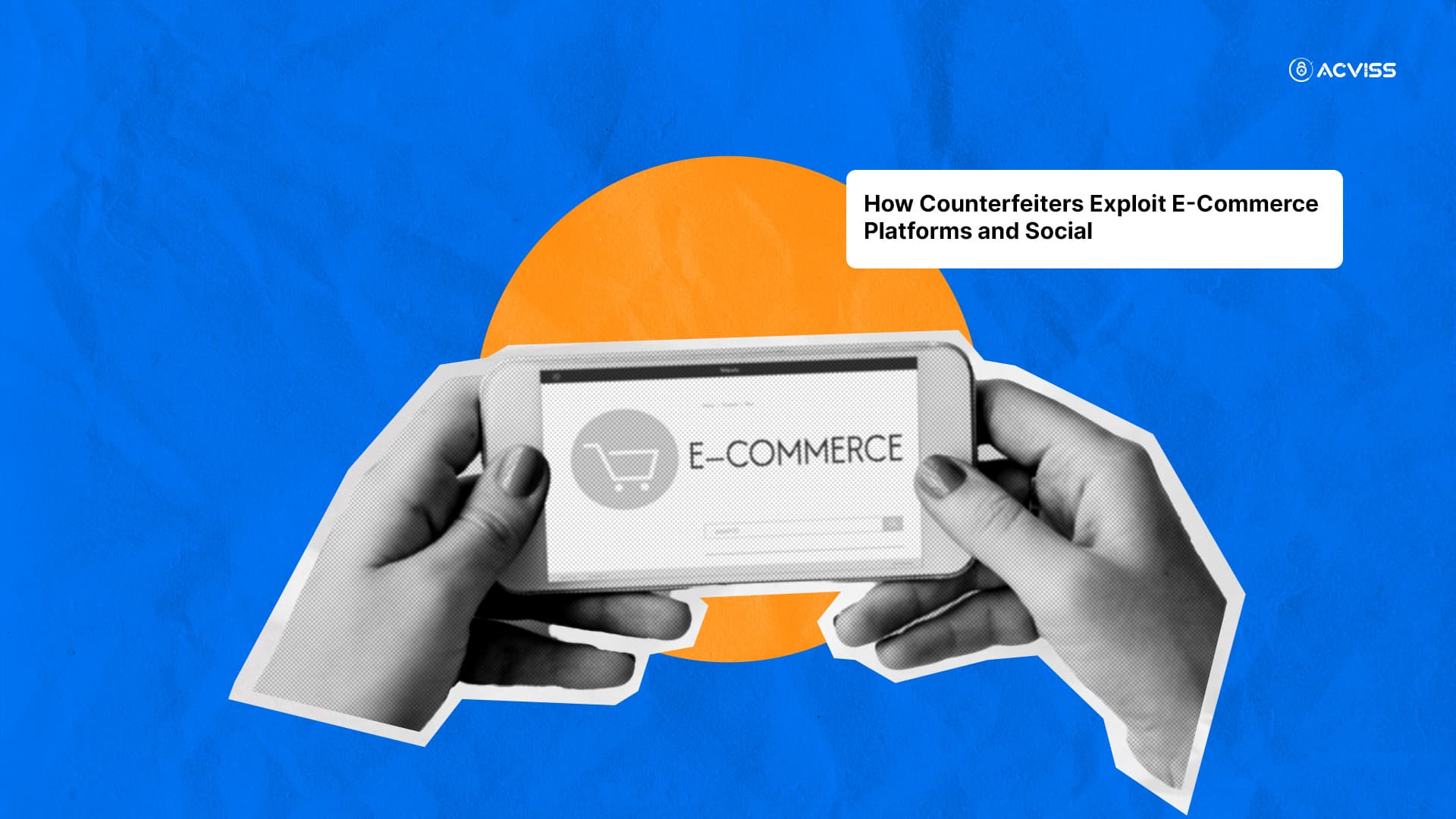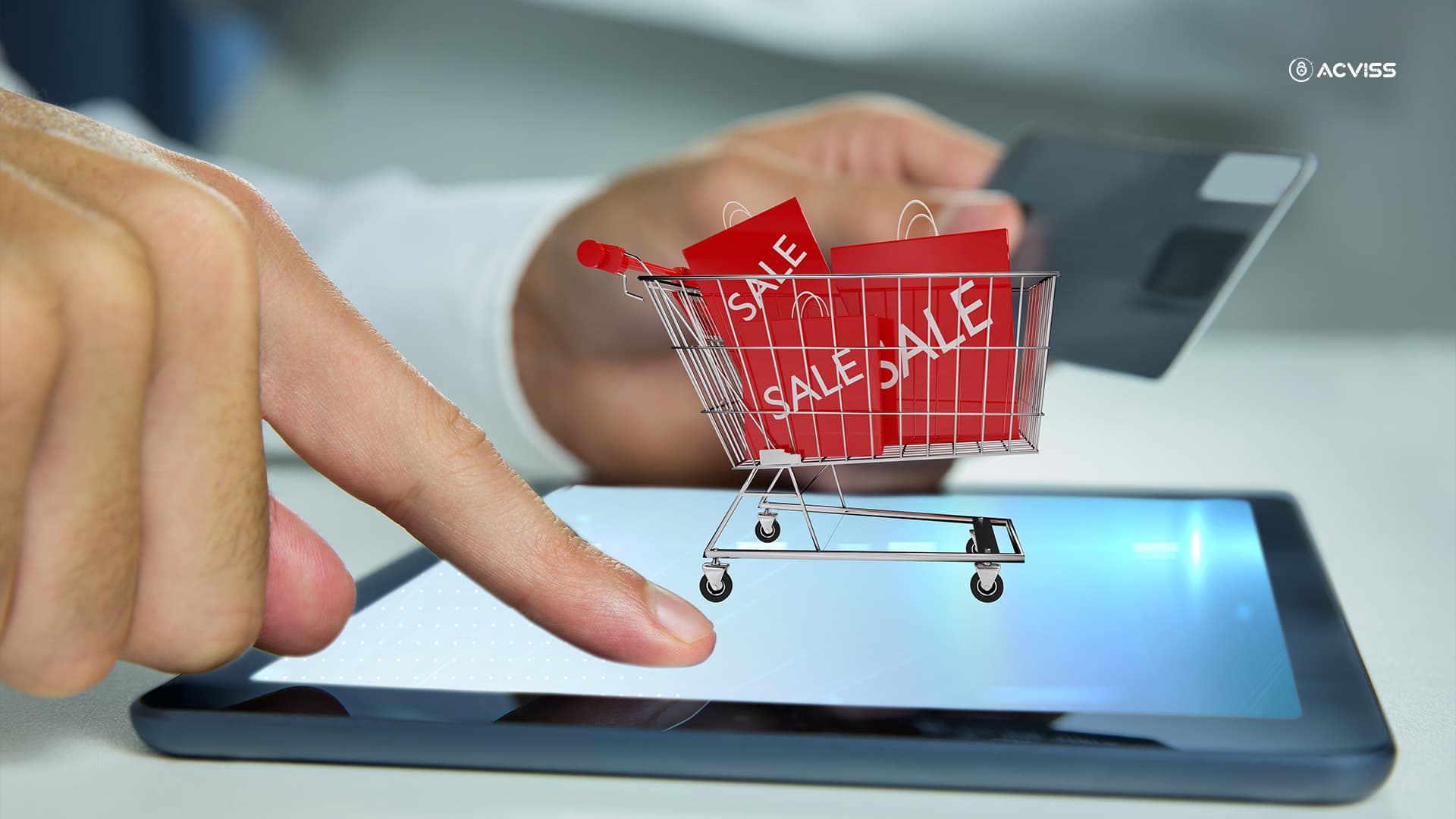How Counterfeiters Exploit E-Commerce, Social Media & How Brand Protection Prevents It

Every click, every scroll, and every purchase we make online feeds a global digital economy that thrives on speed, convenience, and scale. But behind this convenience lies a silent threat, one that has evolved faster than the platforms meant to contain it.
Counterfeiting has always existed, but the rise of e-commerce platforms and social media marketplaces has transformed it from a black-market operation into a sophisticated digital enterprise. Today, counterfeiters don’t lurk in back alleys; they advertise openly on your feed, optimise their listings for SEO, and even invest in influencer marketing.
This new generation of counterfeiters knows how to exploit the very algorithms and engagement models designed to boost legitimate brands. And the consequences are far-reaching: eroded brand trust, compromised product safety, and millions lost in revenue and reputation.
To truly understand this modern challenge, we must dissect how counterfeiters operate in digital spaces and how advanced brand protection solutions, powered by product traceability and anti-counterfeiting technologies, can help brands fight back.
The Digital Shift: A Double-Edged Sword
E-commerce has democratised retail. Platforms like Amazon, Flipkart, and Alibaba made it possible for anyone to start selling online with minimal barriers. For brands, this opened new markets. For counterfeiters, it opened new opportunities.
The low entry cost, coupled with the anonymity of online selling, has created a fertile ground for fakes. A significant portion of this trade now originates or transacts through e-commerce channels.
Social media platforms, Instagram, Facebook Marketplace, and TikTok Shop have added another layer to the problem. With influencer culture and user-generated content blurring the lines between advertising and social interaction, counterfeiters use these spaces not just to sell, but to build credibility.
How Counterfeiters Exploit E-Commerce Platforms

1. Manipulating Marketplace Algorithms
E-commerce algorithms are designed to promote listings based on engagement, ratings, and sales volume. Counterfeiters exploit this by flooding platforms with low-cost duplicates, generating artificial reviews and sales through fake accounts.
This manipulation often pushes counterfeit listings above authentic ones, particularly when consumers sort by price. A customer looking for a “branded perfume” or “wireless earbuds” might unknowingly purchase a counterfeit simply because it appeared first in the search results.
2. Hijacking Authentic Listings
Counterfeiters often infiltrate legitimate product listings by posing as third-party resellers. They offer the same branded product at a slightly lower price, but the items they dispatch are counterfeit.
For unsuspecting consumers, the purchase appears legitimate. But for brands, this results in false warranty claims, poor customer reviews, and diluted brand credibility, even though they had nothing to do with the transaction.
3. Cloning Stores and Brand Pages
Using stolen trademarks, images, and brand copy, counterfeiters replicate official brand storefronts on marketplaces or create standalone sites. These clone stores are often indistinguishable from authentic pages and can deceive even tech-savvy customers.
By leveraging paid advertising tools, counterfeiters ensure their fake stores appear in top search results or social feeds, directly competing with genuine listings.
4. Cross-Border Complexity and Supply Chain Loopholes
The globalised nature of e-commerce means a counterfeit product can originate in one country, be stored in another, and shipped to a third. This makes supply chain management incredibly complex and difficult to monitor.
Without robust track and trace systems, identifying where counterfeit goods enter the supply chain becomes nearly impossible. Counterfeiters exploit this opacity, inserting fake products at weak points such as third-party logistics hubs or unauthorised distributors.
The Rise of Social Commerce: A New Battlefield
Social media was once a marketing playground. Now, it has evolved into a full-fledged sales ecosystem, and counterfeiters are quick to adapt.
1. Influencer Endorsements of Counterfeit Products
Influencers drive trends, but counterfeiters exploit this by paying micro-influencers or bots to promote fake products disguised as “dupes” or “budget alternatives.” These promotions often link to fraudulent e-commerce sites or hidden marketplaces.
The result is an illusion of legitimacy that blurs ethical boundaries. Consumers think they’re buying an affordable version of a luxury product, unaware they’re supporting a counterfeit network.
2. Ephemeral Content and Disappearing Evidence
Stories, live videos, and private groups allow counterfeiters to sell without leaving lasting traces. Once a counterfeit product is sold through a private DM or temporary post, evidence disappears, making enforcement difficult.
Platforms’ automated moderation systems often fail to catch these posts in real time, giving counterfeiters a wide operational window.
3. Mimicking Customer Engagement
Fraudulent sellers now replicate authentic customer engagement strategies, hosting giveaways, responding to comments, and using branded hashtags. This mimicry creates a perception of authenticity that deceives not only consumers but also automated detection systems.
The Consequences for Brands and Consumers

1. Loss of Brand Credibility
When customers receive substandard counterfeit products under a brand’s name, they rarely blame the counterfeiters. They blame the brand. Negative reviews and social media backlash can permanently damage consumer perception.
2. Threats to Consumer Safety
Counterfeit electronics, cosmetics, and pharmaceuticals pose serious health and safety risks. According to the OECD, counterfeit medicines alone account for over 10% of all medical products in developing countries, with some containing toxic or ineffective ingredients.
3. Disruption in Supply Chain Transparency
Without a clear product traceability mechanism, counterfeit goods often infiltrate the legitimate supply chain undetected, compromising data integrity and regulatory compliance.
4. Erosion of Intellectual Property (IP) Rights
Each counterfeit listing undermines trademark protection and IP protection efforts painstakingly established by brands. The unauthorised use of brand assets diminishes the exclusivity and legal strength of registered trademarks.
How Brands Can Fight Back: Building a Digital Wall of Trust
Protecting a brand online is no longer about chasing counterfeiters after the damage is done. It’s about constant vigilance, monitoring, detecting, and neutralising threats before they reach consumers. The internet’s openness has made brand impersonation and counterfeit sales easy to launch, but it has also provided brands with tools to defend themselves with equal sophistication.
Online brand protection today is a fusion of technology, strategy, and consumer engagement. It begins by understanding where and how counterfeiters operate digitally, and establishing a layered defence across all touchpoints.
1. Active Digital Surveillance and Takedown Operations
The first line of defence in online brand protection is visibility. Counterfeiters thrive in obscurity; brands must therefore illuminate every corner of the web where their identity may be misused.
AI-driven monitoring systems now allow brands to scan millions of data points across e-commerce platforms, social media networks, and online marketplaces in real time. These systems detect:
- Unauthorised product listings using the brand’s trademarks or imagery.
- Fake websites mimicking official brand pages.
- Fraudulent advertisements that divert customers to counterfeit sites.
- Misuse of brand assets in social media promotions or influencer campaigns.
Solutions such as Truviss utilise advanced machine learning algorithms and image-recognition technology to track down such infringements automatically. Once detected, these systems can initiate takedown procedures, coordinate with marketplace compliance teams, and maintain an updated threat database.
This approach not only ensures faster removal of counterfeit listings but also helps brands predict emerging threats, shifting from reactive enforcement to proactive brand protection.
2. Securing Digital Identities through Brand Authentication
Every legitimate brand has a digital footprint, its logos, domain names, product catalogues, and verified social media handles. Counterfeiters often exploit these identifiers to create deceptive versions of the brand online.
Effective online brand protection demands brand authentication across all platforms. This involves:
- Domain Monitoring: Detecting fraudulent or typo-squatted domains (e.g., “nkie.com” instead of “nike.com”).
- Verified Social Profiles: Ensuring official brand pages are authenticated on Instagram, Facebook, and X (Twitter).
- Marketplace Verification: Registering as an official seller on major e-commerce sites to distinguish legitimate listings.
- Trademark Watch Services: Tracking the misuse of trademarks and intellectual property (IP) across new digital markets and product categories.
These measures build digital resilience by reinforcing a singular, verified brand identity that consumers can trust.
3. Data-Backed Consumer Engagement and Verification
Counterfeiters exploit uncertainty. The more confused consumers are, the more likely they are to buy fake products online. Educating customers, therefore, is not just an ethical choice; it’s a strategic layer of protection.
Brands can empower customers through product verification mechanisms, QR codes, serial numbers, or online verification portals, enabling them to confirm authenticity instantly. When integrated into websites or brand apps, these tools double as customer engagement platforms, collecting feedback and building post-purchase trust.
This direct relationship between brand and buyer enhances customer satisfaction and reduces dependency on unverified third-party sellers.
When supported by platforms like Truviss, which provide analytics on customer interactions and counterfeit reporting trends, brands can gain valuable insights into how and where counterfeits are affecting their online presence.
4. AI-Enabled Threat Intelligence and Analytics
Artificial intelligence is revolutionising brand protection solutions. AI tools can track abnormal pricing patterns, seller behaviour, or keyword manipulation that may signal counterfeit activity. They can also identify image similarities between counterfeit and original product photos, something manual monitoring often misses.
By mapping the counterfeit ecosystem, AI provides brands with a digital risk profile: identifying high-risk sellers, frequent counterfeit sources, and potential vulnerabilities in specific product categories or geographies.
Platforms like Truviss use this approach to generate real-time analytics, allowing brands to take swift, informed actions such as reporting counterfeit networks, issuing takedown notices, or alerting distributors.
This predictive intelligence enables a zero-tolerance digital strategy, where threats are contained before they erode consumer trust.
5. Integration of Track and Trace for Online Commerce
Although track and trace systems are traditionally applied in physical supply chain management, their principles are increasingly relevant in online trade. Linking digital sales channels with authenticated supply chain data ensures that each online transaction can be traced back to an authorised source.
When combined with product traceability, brands gain the ability to validate whether a product sold online actually originated from their legitimate distribution network.
For instance, a customer scanning a QR code on an e-commerce purchase could trace the item’s journey, from manufacturer to fulfilment centre, confirming product safety and authenticity. This integration bridges the gap between physical goods and digital verification, uniting IP protection and consumer trust in one ecosystem.
6. Strengthening Trademark and IP Protection Online
Online marketplaces often become breeding grounds for trademark violations. Counterfeiters register domains or social handles resembling well-known brands, sometimes even filing for trademarks in jurisdictions where the genuine brand has yet to register.
To prevent such infringements, brands should:
- Maintain comprehensive trademark registrations across all major jurisdictions.
- Work with IP protection agencies and legal partners to monitor domain and social handle registrations.
- Use brand protection dashboards to report infringements directly to platforms like Amazon Brand Registry or Meta Rights Manager.
Digital enforcement must go hand-in-hand with technological monitoring. A strong legal framework amplifies the effectiveness of automated brand protection systems.
7. Collaborative Action with E-Commerce and Social Media Platforms
No brand can fight digital counterfeiting alone. Strategic partnerships with major platforms enable brands to enforce takedowns more swiftly. Most global marketplaces now provide formal channels for IP owners to report counterfeit goods or unauthorised listings.
However, success depends on consistent data sharing. By integrating brand authentication data, proof of ownership, and product identifiers into these systems, brands make it easier for platforms to validate claims and remove fakes faster.
Collaboration also helps platforms strengthen their algorithms to distinguish between legitimate and fraudulent sellers, creating a safer online marketplace for all.
8. Educating Consumers as Digital Advocates
Awareness is often the most underused weapon in the online brand protection arsenal. Brands that openly educate customers about identifying counterfeit listings and safe purchasing practices create a powerful network of digital advocates.
This education can take the form of:
- Verified brand awareness campaigns on social media.
- Step-by-step guides on spotting fake listings or unauthorised sellers.
- Encouraging customers to report suspicious links or counterfeit products.
Every informed customer becomes a part of the anti-counterfeiting ecosystem, reinforcing trust and amplifying brand authenticity.
The Role of Technology in Redefining Online Brand Protection

Technology is no longer just a defensive tool; it’s an enabler of credibility. By merging AI surveillance, blockchain-based traceability, and digital authentication, brands can build ecosystems that are virtually impregnable to counterfeit activity.
1. AI-Powered Brand Monitoring
Through automation, brands can now track counterfeit listings, fake social media ads, and misused imagery with precision. Systems like Truviss continuously analyse patterns across thousands of digital platforms, providing actionable insights and enforcement pathways.
2. Blockchain for Transparency and Traceability
By integrating blockchain technology into digital transactions, every product movement, whether physical or online, can be recorded in an immutable ledger. This ensures that each sale, claim, or transfer of ownership is transparent, strengthening both product traceability and IP protection.
3. Unified Brand Verification Ecosystems
A consolidated ecosystem combining brand authentication, product verification, and traceability not only secures products but also enhances customer engagement. Each scan, click, or verification becomes a moment of trust, a digital handshake between brand and consumer.
The Broader Need for Policy, Collaboration, and Vigilance
Governments and trade bodies are increasingly acknowledging that online brand protection is not just a corporate concern; it’s a public one. Counterfeit products undermine tax revenues, threaten product safety, and distort market competition.
Frameworks like the EU Digital Services Act (DSA) and the US SHOP SAFE Act are early signs of global movement towards shared accountability between platforms and brand owners.
As regulations evolve, digital brand protection solutions will form a key component of compliance, ensuring businesses remain ahead of both counterfeiters and regulatory expectations.
Building the Future of Digital Trust
The rise of online counterfeiting is not merely a technological challenge; it’s a test of brand integrity. Consumers today don’t just buy products; they buy confidence. Protecting that confidence requires vigilance, transparency, and an unrelenting commitment to authenticity.
By combining brand verification, product traceability, and AI-led surveillance systems such as Truviss, brands can restore control over their digital presence. Every takedown, every verified product, every informed customer contributes to rebuilding that fragile yet invaluable asset: trust.
Interested to learn more? Get in touch with us to explore how comprehensive online brand protection can safeguard your reputation in the digital marketplace.
